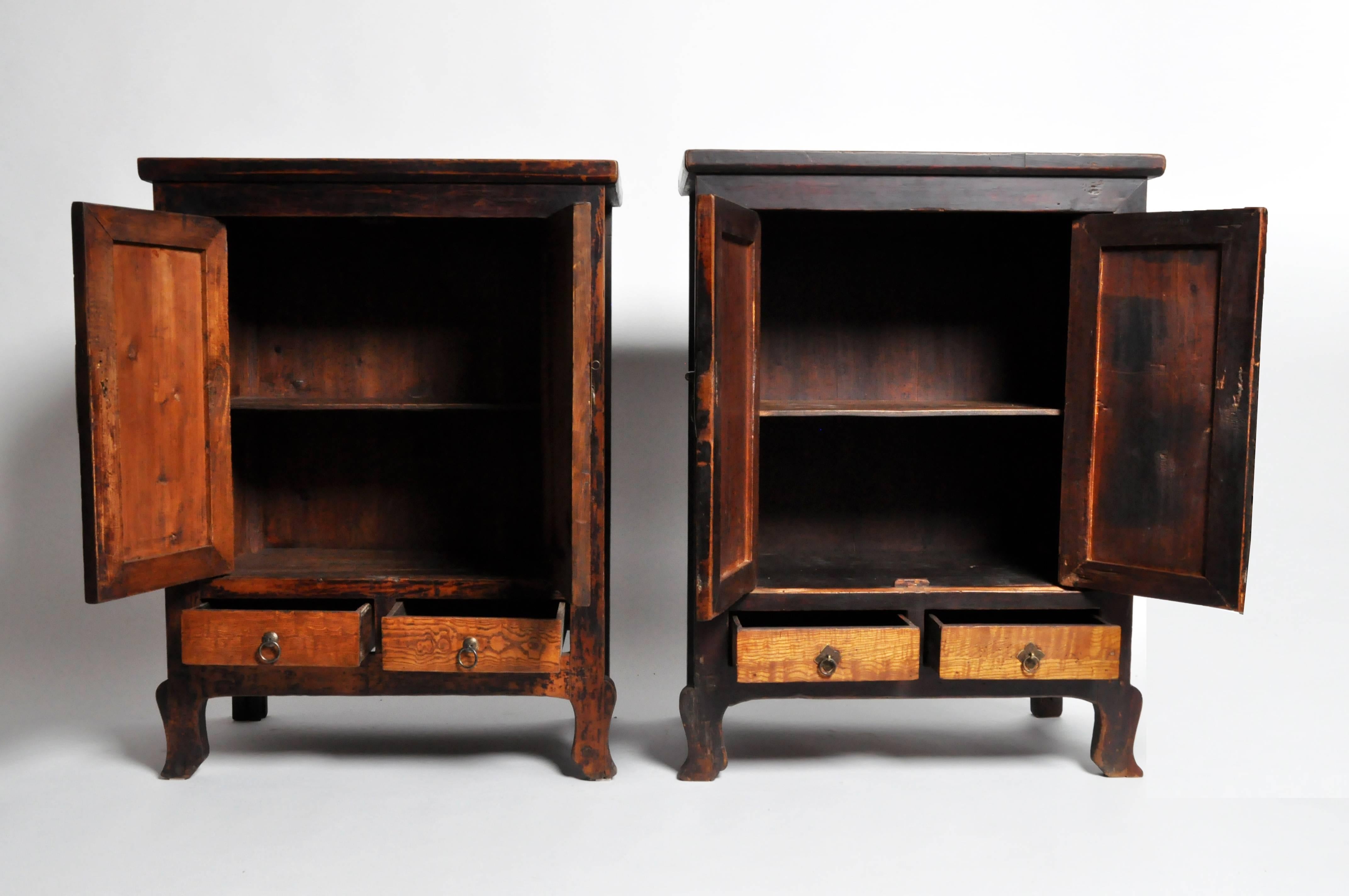Burl Wood Aesthetics and Properties: Burl Wood Kitchen Cabinets

Burl wood, with its captivating, unpredictable patterns and rich textures, offers a unique aesthetic that elevates kitchen cabinetry beyond the ordinary. Its distinctive character stems from the unusual growth of the wood, creating a visually stunning and highly sought-after material.
Burl wood’s visual characteristics are its defining feature. The swirling, knotty grain patterns are unlike any other wood species, resulting in a three-dimensional effect that plays with light and shadow. Color variations are abundant, ranging from light tans and creams to deep browns, reds, and even blacks, often within the same piece. These variations create a mesmerizing visual tapestry, adding depth and character to kitchen designs. The overall aesthetic appeal is one of luxurious opulence and natural artistry, making burl wood cabinets a statement piece in any kitchen.
Comparison of Burl Wood with Other Wood Types
Burl wood, while aesthetically striking, differs significantly from other popular cabinet woods in terms of properties and practicality. Cherry wood, for example, is known for its rich reddish-brown tones that deepen with age, offering a classic and elegant look. Its grain is generally straighter and more predictable than burl, resulting in a more uniform appearance. Maple, on the other hand, boasts a lighter, cleaner look, with a fine, even grain and a hardness that makes it durable and resistant to scratches. Oak, a long-standing favorite, provides strength and durability, with a prominent grain pattern that can range from subtle to quite pronounced, depending on the type of oak. While these woods offer elegance and practicality, burl wood’s unique, highly figured grain is its most significant differentiator, making it a choice for those seeking a truly one-of-a-kind aesthetic. However, this uniqueness also comes with challenges in terms of availability, cost, and workability.
Durability, Maintenance, and Cost Comparison
The following table compares the durability, maintenance requirements, and cost of burl wood cabinets with those made from cherry, maple, and oak. Cost estimates are broad generalizations and will vary based on factors such as wood quality, cabinet design, and labor costs.
| Wood Type | Durability | Maintenance | Cost |
|---|---|---|---|
| Burl Wood | Moderate to High (depending on burl type and finish); susceptible to cracking if not properly finished and maintained. | High; requires regular cleaning and occasional refinishing due to its sensitivity to moisture and temperature changes. | Very High; significantly more expensive than other wood types. |
| Cherry | High; naturally durable and resistant to wear. | Moderate; regular cleaning and occasional oiling or waxing to maintain luster. | High; considered a premium wood. |
| Maple | High; hard and resistant to scratches and dents. | Low; relatively easy to clean and maintain. | Medium to High; less expensive than cherry or burl. |
| Oak | High; strong and durable, with good resistance to wear and tear. | Moderate; regular cleaning and occasional refinishing may be needed. | Medium; generally less expensive than cherry or maple. |
Practical Aspects of Burl Wood Kitchen Cabinets

Investing in burl wood kitchen cabinets is a significant undertaking, demanding careful consideration beyond the aesthetic appeal. This section delves into the practicalities of selecting, purchasing, and maintaining these exquisite pieces, ensuring your investment yields lasting beauty and functionality.
Selecting and Purchasing Burl Wood Kitchen Cabinets
The process of acquiring burl wood cabinets begins with understanding the nuances of sourcing, quality assessment, and pricing. Sourcing reputable suppliers is paramount. Look for manufacturers with a proven track record, transparent sourcing practices, and a commitment to sustainable forestry. Quality is determined by several factors: the density and figure of the burl wood itself (a denser, more richly figured burl will be more durable and visually striking), the joinery techniques employed in construction (strong, well-fitted joints are essential for longevity), and the finish applied (a high-quality finish protects the wood and enhances its beauty). Pricing varies significantly depending on the type of burl wood, the complexity of the design, the size of the order, and the reputation of the manufacturer. Expect to pay a premium for high-quality, custom-made burl wood cabinets, reflecting the rarity and craftsmanship involved. Budget accordingly, factoring in potential costs for installation and any necessary modifications. Comparing quotes from multiple reputable suppliers is highly recommended.
Care and Maintenance of Burl Wood Kitchen Cabinets
Proper care and maintenance are crucial for preserving the beauty and longevity of your burl wood cabinets. Regular cleaning is essential, using a soft, slightly damp cloth and a mild, pH-neutral cleaner specifically designed for wood. Avoid abrasive cleaners, harsh chemicals, and excessive moisture, all of which can damage the finish and the wood itself. For stubborn stains, consult a professional wood restoration specialist. Preventative measures are equally important. Keep the cabinets away from direct sunlight and heat sources, as these can cause discoloration and warping. Use coasters and placemats to protect the surfaces from spills and scratches. Regularly inspect the cabinets for any signs of damage or wear, addressing minor issues promptly to prevent them from escalating. Consider applying a high-quality wood conditioner periodically to maintain the wood’s moisture balance and prevent cracking. A yearly professional inspection and treatment can further enhance the cabinets’ longevity. Investing in these practices will ensure your burl wood cabinets remain a stunning focal point in your kitchen for years to come.
